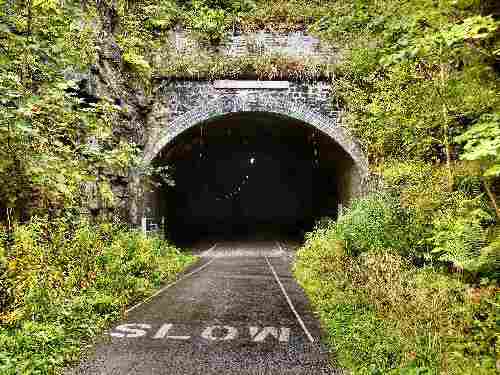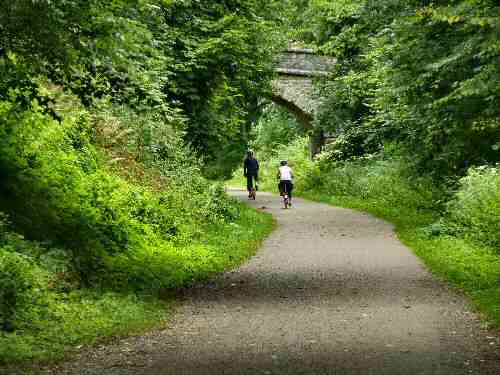MONSAL TRAIL
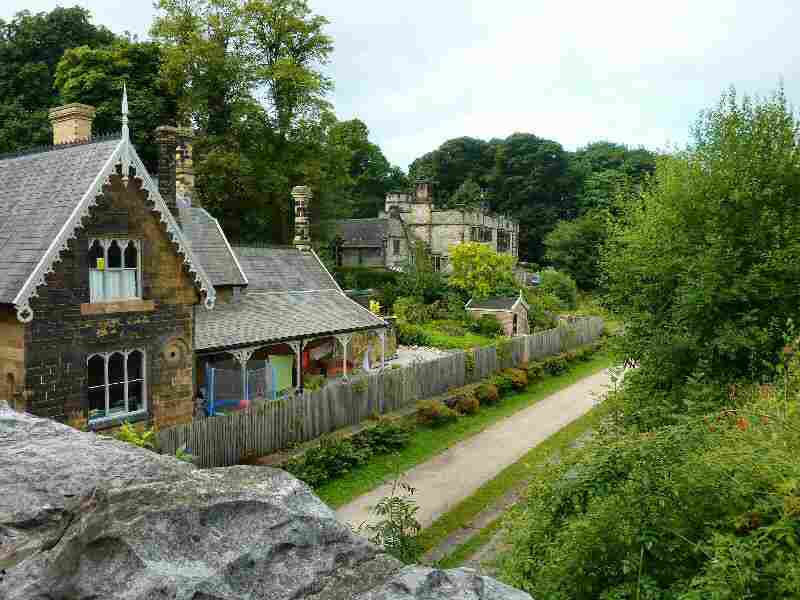
PLAN YOUR VISIT TO THE MONSAL TRAIL
Location: The Monsal Trail runs from Coombs Road Viaduct, one mile southeast of Bakewell, to the head of Chee Dale, about three miles east of Buxton.
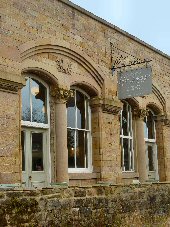
Visit: Monsal Head, on a minor road northwest of Ashford in the Water, looks down on the dale below, from where you get a wonderful view of the Headstone Viaduct. Yet John Ruskin, the poet and conservationist, ranted when it was built: ‘The valley is gone – and now every fool in Buxton can be in Bakewell in half an hour and every fool at Bakewell in Buxton.’ Despite the initial controversy over the building of the viaduct in Monsal Dale, it is now considered an important feature of historic and architectural interest. There was a widespread protest when the railway line closed after 100 years, and plans were mooted to demolish the viaduct. The answer came in 1970, with the award of a preservation order.
Refreshments: Bakewell Pudding Shop is a great favourite. The town has several pubs, cafes, and restaurants to suit all tastes. Several villages just off the trail have refreshment facilities, including at Monsal Head.
Bakewell: The picturesque old market town of Bakewell is set in an enviable location on the banks of the River Wye, in the heart of the Peak District. In 1951, when the Peak was the first of the national parks to be set up in England and Wales, Bakewell – the only town in the park – was the logical choice as the administrative centre. Visitors can enjoy scenic walks, explore historic sites like Chatsworth House and Haddon Hall nearby, or indulge in local markets and speciality shops. It is a haven for painters, photographers, and anyone seeking a tranquil yet vibrant atmosphere.
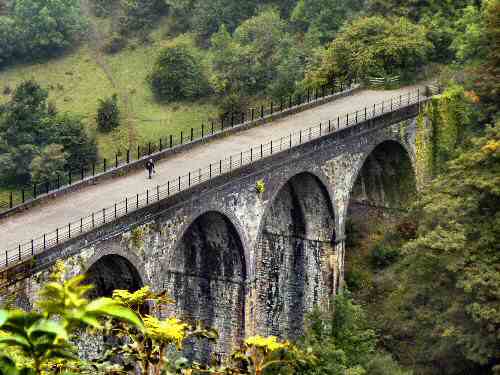
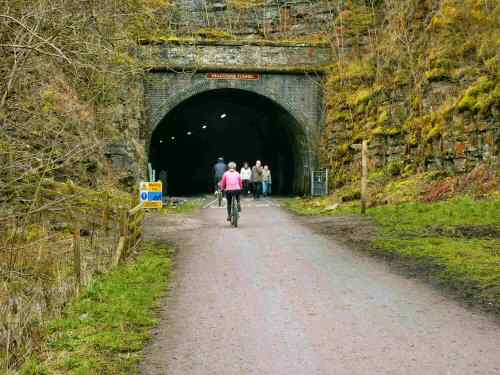
MONSAL TRAIL
The Monsal Trail runs along a disused railway line that has been converted into a track for walkers, cyclists, and horse riders. It runs for eight and a half miles and follows the deep limestone valley of the River Wye through breathtaking countryside. The tunnels have been reopened, and diversions are no longer necessary. There are several joining points, which make it easy to plan circular walks.
In the 1860s, the London-Midland railway ran along the line linking St Pancras and Manchester. The pretty little woodland station at Great Longstone, the last stop before crossing Monsal Dale Viaduct, still stands, but now is only passed by walkers, cyclists, and horse riders.
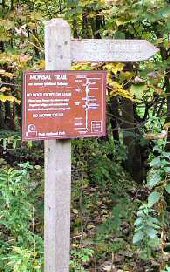
The station at Millers Dale was once a major junction on the Midland Railway Line, and was one of the largest stations on the line. The original station, opened in 1863, had three platforms, two on the main line for trains between London and Manchester and a bay for the branch line to Buxton. A further two platforms were added when the second viaduct was opened in 1905. It was one of the few stations in England to have a post office on the platform.
The railway closed in 1968, and the line remained unused for twelve years before being taken over by the Peak National Park. The track has been converted into a walking route, known as the Monsal Trail. It stretches from Wye Dale, near Buxton, to Coombs Road, near Bakewell. The station car parks at both Bakewell and Millers Dale are convenient for walkers who come by car to explore the magnificent Wye Valley scenery and enjoy the abundant wildlife, flora, and fauna.
Constructing a railway line with tunnels, viaducts, and cuttings was difficult territory, and the local landowners made it even more complicated. Initially, it seemed to have got off to a good start. Paxton built an impressive Italianate Railway Station at Rowsley and four stone cottages to house railway workers. The Station Hotel, now renamed the Grouse and Claret, was built nearby, and everything was ready to extend the line through the valley.
Unfortunately, there was a problem. The Duke of Devonshire was adamant that he would not allow the line across Chatsworth Park. If that was not bad enough, the Duke of Rutland also refused an alternative plan for the railway to run across his estate at Haddon. All the railway company could do at the time was to run trains between Rowsley and Ambergate. The problem was solved when the Duke of Rutland agreed to the plans of the Midland Railway to build a track out of sight, in a cutting behind Haddon Hall. A new station was built a quarter of a mile south, and instead of the line running up the Derwent Valley, it ran along the Wye Valley. Paxton’s splendid station was left isolated in the wrong valley. It was not until 1867 that the line finally reached Manchester. One hundred years later, Dr Beeching announced its closure.
